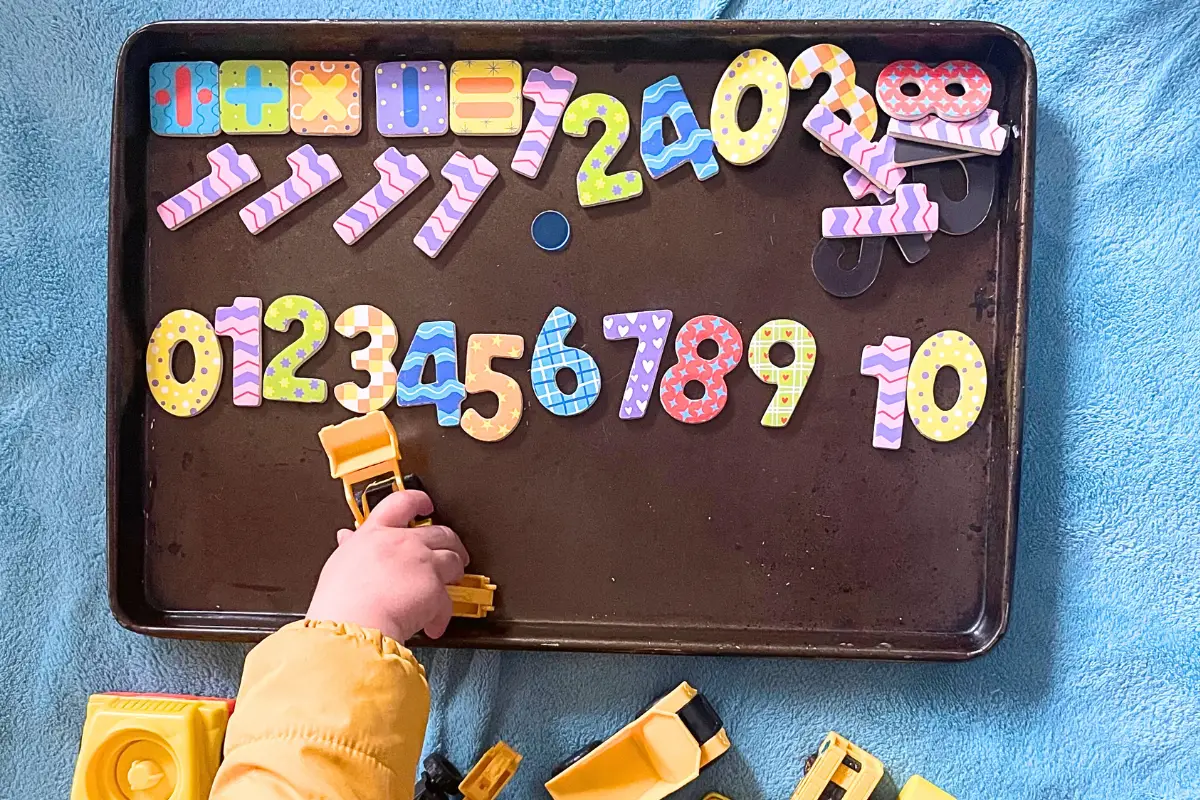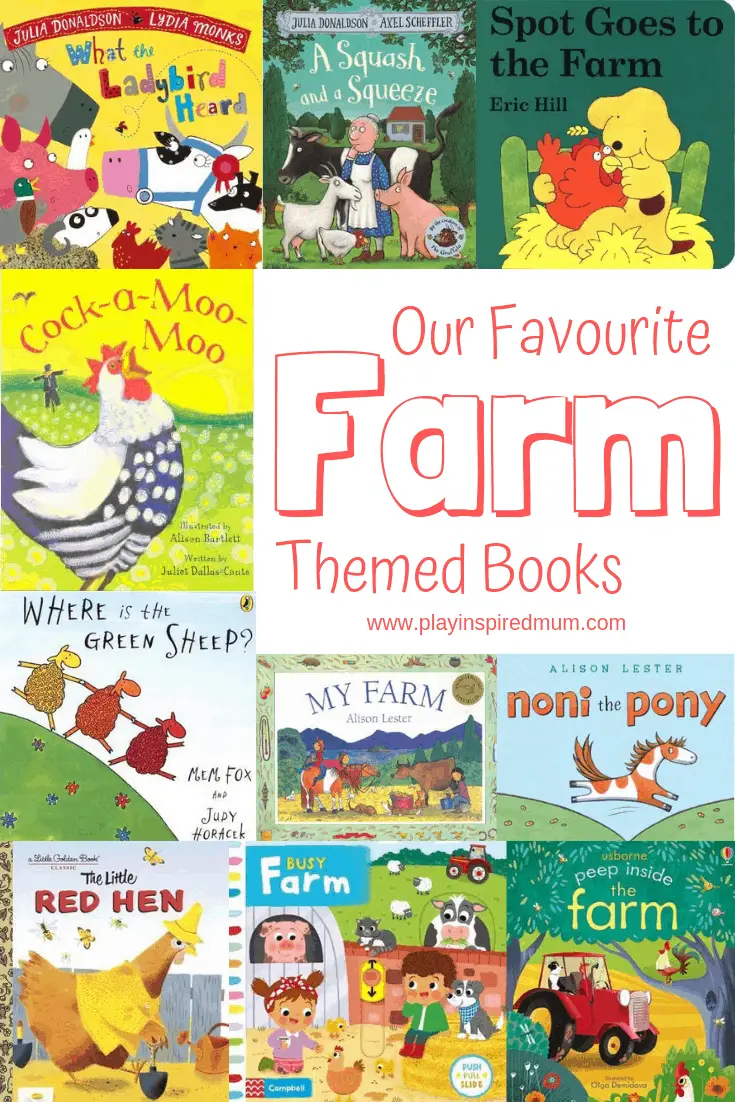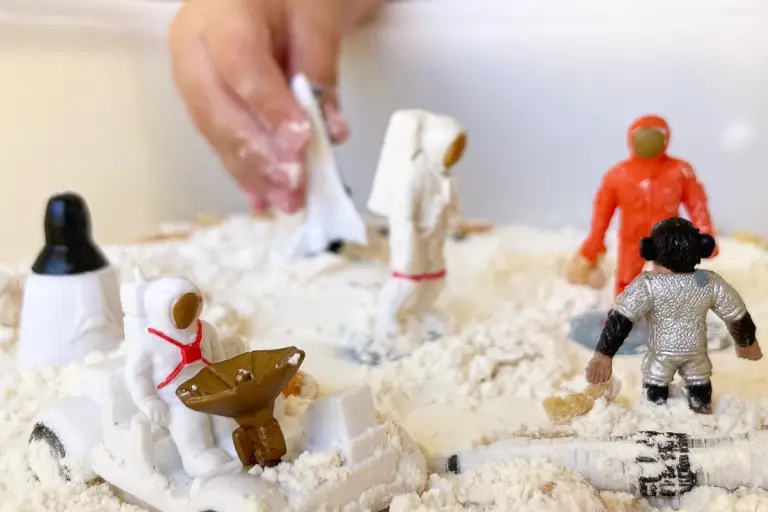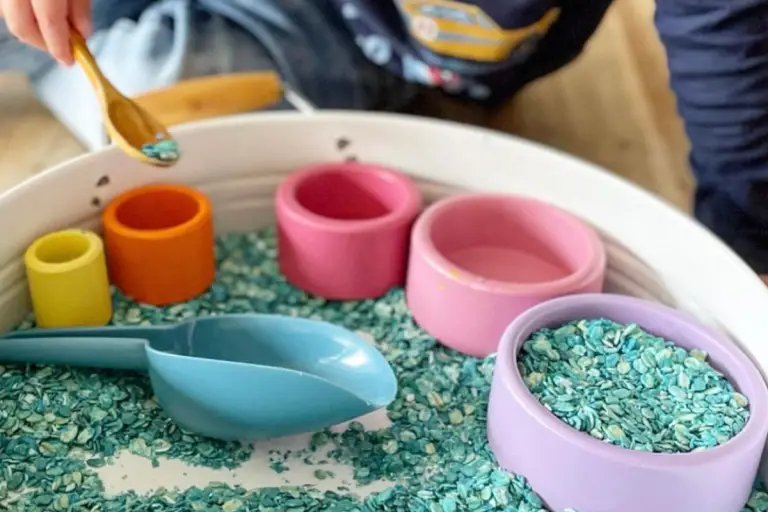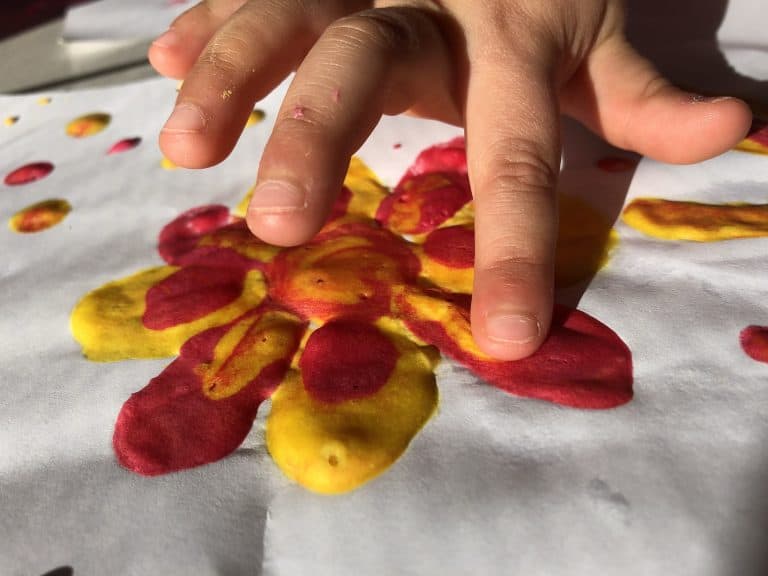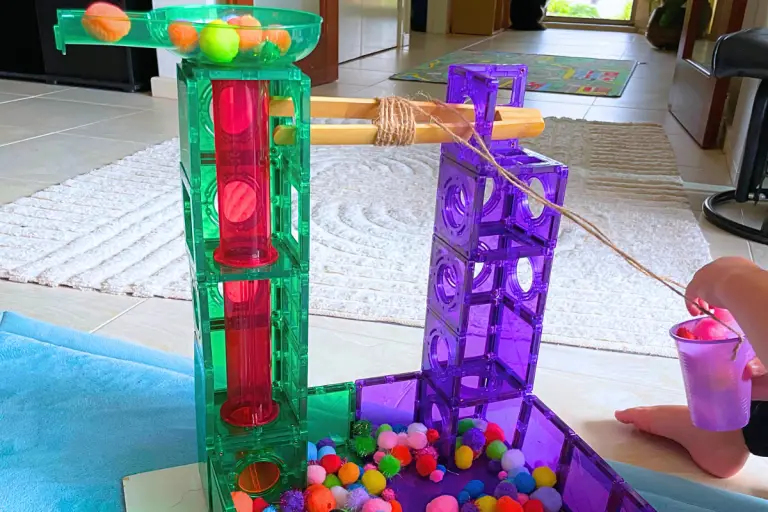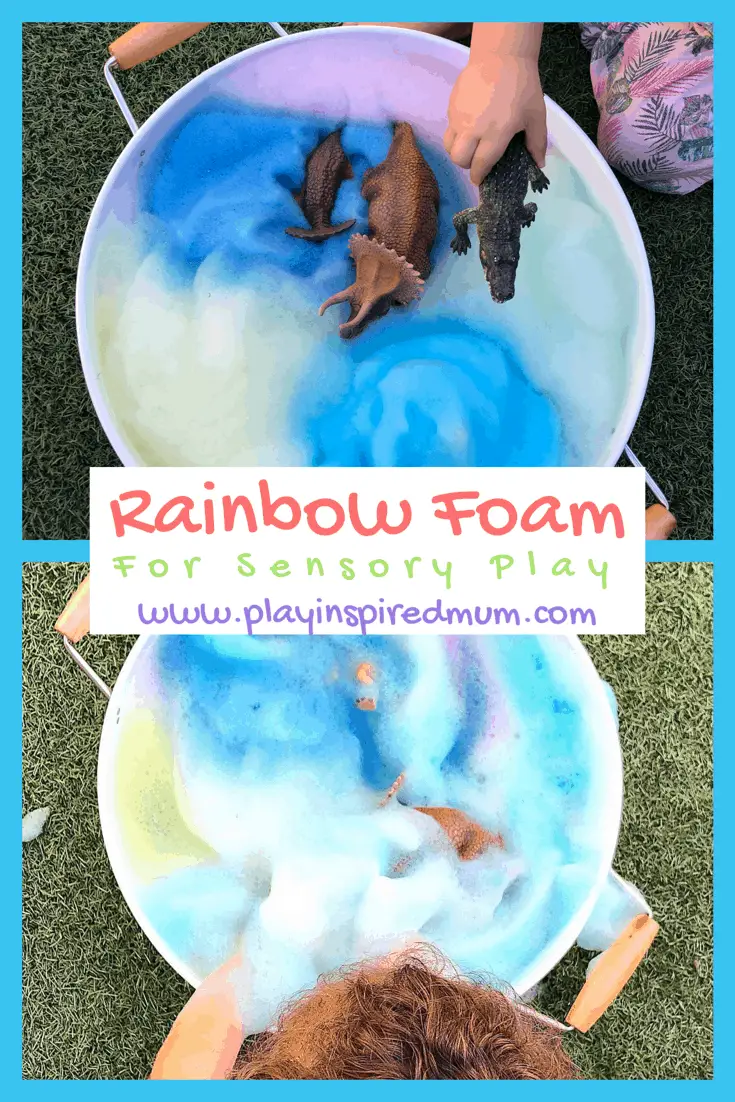Magnetic Numbers on Cookie Sheet Counting
Disclosure: This blog contains affiliate links which I may earn a small commission from if you purchase through them, at no extra cost to you.
Introduce your toddler to numbers with this magnetic numbers on cookie sheet counting activity.
Magnetic numbers on a cookie sheet can be a fun and interactive way to teach and practice counting with your toddler.
Not only does this activity expose them to rote counting and the written number or symbol that represents the number, but you can also use their interest to show the value the number represents.
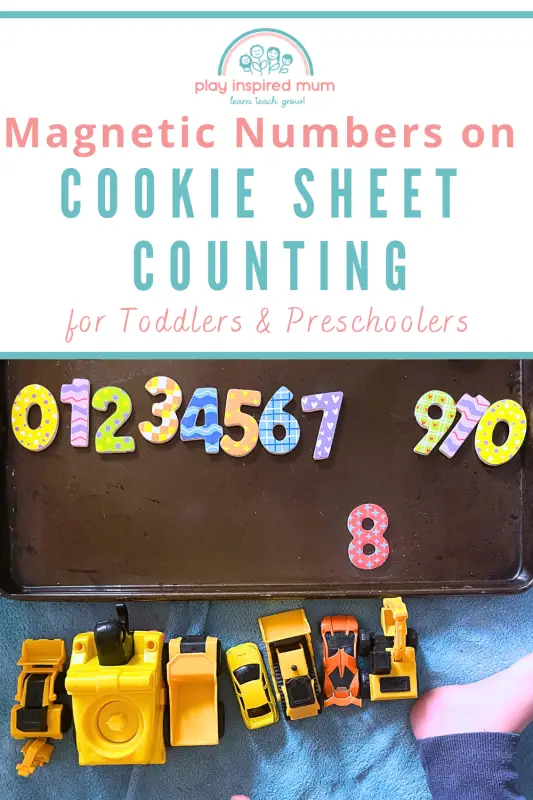
Magnetic Numbers on Cookie Sheet Counting
Magnetic numbers are so versatile. We have had our set of wooden magnetic numbers since Miss 9 was only three. They have been well-loved and used for so many different activities.
Our wooden magnetic numbers have spent time:
- as number sentences on the fridge
- across the children’s whiteboards during their role play
- buried under coloured rice
- matched up with natural loose parts
- adding numeracy elements to setting up a snailery
- teamed up with old formula tins for posting activities
These have been well used with the first two children and now I am so excited to have them join Mr 2 on his learning journey too.
The ones we use are wooden numbers with a magnetic backing that covers the entire back of the number. The magnets are smooth so wont scratch the surface of your fridge and there is no risk of the magnet falling out unlike others on the market.
The coloured side of the magnetic numbers are paper. If your toddler is still mouthing, the numbers may get damaged of they get wet.
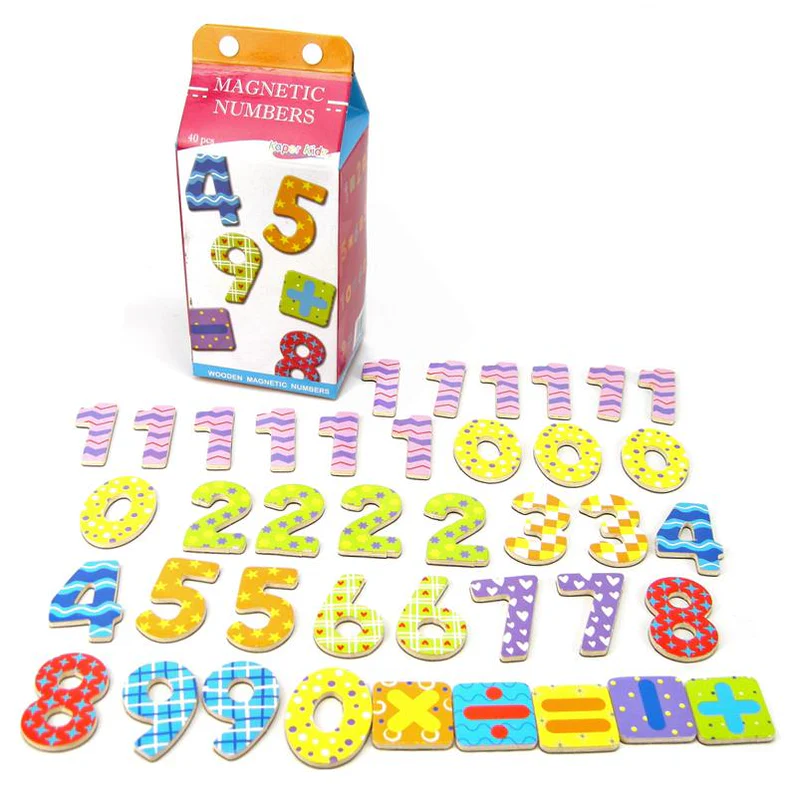
We had half an hour to spare before heading to school pick-up. Mr 2 had been enjoying reading the numbers on the letter boxes on the way to and fro from school so I extended this interest in numbers using our cherished magnetic numbers and a humble cookie sheet.
What you need for a magnetic numbers on cookie sheet counting activity
- Magnetic numbers
- Cookie sheet
- Toys, counters or loose parts
For the first instance, we used counters to represent the value of each of the numbers. Mr 2 was distracted by the counters and the play took a turn based solely on the little coloured circles. This was great and the organic lead he took was really rewarding to watch.
The second time, after he requested the magnetic numbers, we used his toy cars to represent the value of the numbers. This proved to capture his interest for longer.
Learning to count
There are a lot of skills that come into play when learning to count.
- Recognising the number symbol
- Counting by correspondence
- Understanding that the number symbol represents a value
Counting is much more than reciting numbers in order. This style of rote learning has a place however doesn’t demonstrate the value of what the numbers represent. Teaching the value of numbers is as simple as counting with your child.
- Count steps taken while walking down to the park
- Count grapes as they are being put into their lunchbox
- Count cups as they are being stacked unpacking the dishwasher
There is a surplus of opportunities to learn how to count in these day-to-day activities.
Highlight that three grapes are more than one grape or a stack of three cups is less than a stack of seven.
Use visual representations of the numbers to show the value.
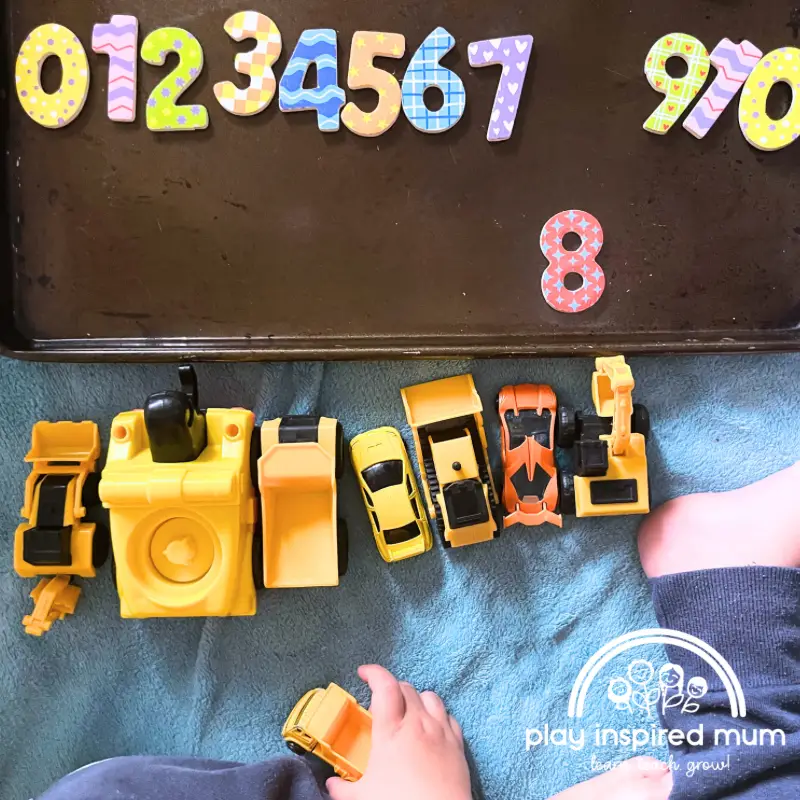
Realistic learning objectives
The main learning areas I was hoping to support with this activity were:
- Identifying numbers 0 – 10
- Counting 0 -10
- Counting by correspondence 0 – 10
- Demonstrating the value of numbers 0 – 10
Mr 2 has shown an interest in numbers for some time now. He has been able to recognise numbers through incidental learning when ‘reading them’ at the shop, on letterboxes in the street, on the microwave display, when cooking with the Thermomix, within the text in books and so many other spaces.
When setting up this activity, I chose to use numbers 0 -10 to further solidify information he already knew and introduce the concept of a single number being a number and when ‘friends with another’ the number changes.
Eg. 1 is one, 1 and a 0 become friends to make 10 (ten).
If you are just introducing your child to numbers, start off with 0-3 or 0-5, so as not to overwhelm them.
Learning must be fun otherwise a child can develop negative associations with the concepts which make them shy away from them. This makes for only more challenges for them (and you) later down the track.
Depending on your child’s age and ability, this activity may fill in 5 minutes or half an hour.
Follow your child’s lead.
Make it fun.
Use their interests to engage their learning.
Fuel a love for learning.
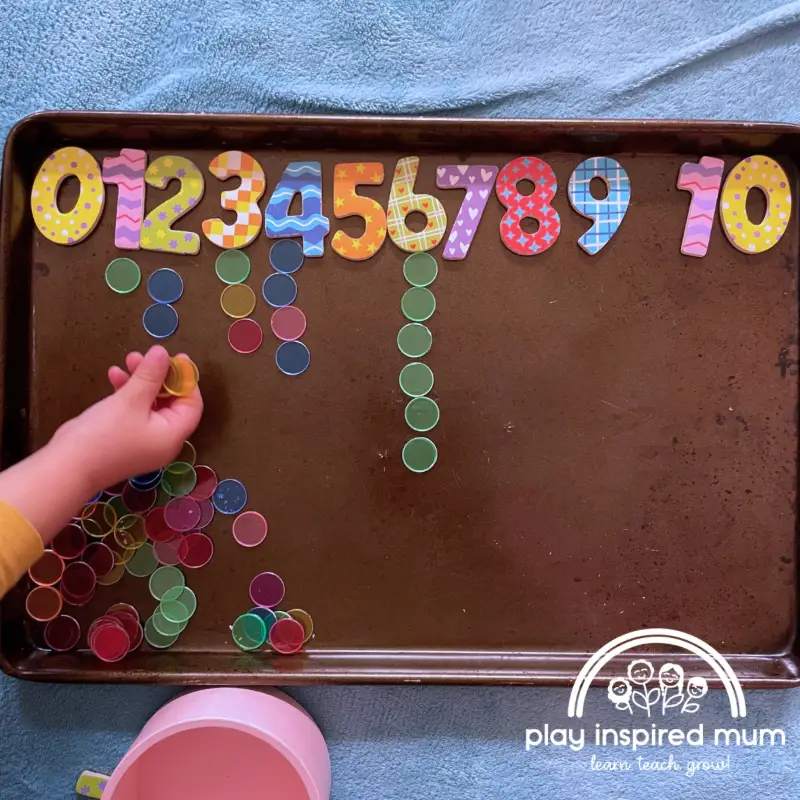
How to set up your magnetic numbers on cookie sheet counting activity
Here’s a simple activity you can do:
- Gather materials: You’ll need a magnetic cookie sheet and magnetic numbers. You can find magnetic numbers at educational toy stores.
- Set up the cookie sheet: Place the cookie sheet on a flat surface, such as a table or the floor, or lean the cookie sheet upon something for a vertical learning experience. Vertical learning is a great strategy to encourage gross motor movements.
- Introduce the activity: Explain to the child that you’ll be using magnetic numbers to practice counting.
- Start with a number: Place a number magnet on the cookie sheet, such as the number 1.
- Count the objects: Ask the child to count the corresponding objects. For example, if the number is 1, they can place their single object next to the number magnet.
- Repeat with different numbers: Continue placing different number magnets on the cookie sheet and ask the child to count the matching number of objects.
- Practice sequencing: Once the child is comfortable with counting individual objects, you can introduce sequencing. Have them place the number magnets in order from 0 to 10 or whatever your learning objective is, and then count out the corresponding objects for each number.
- Explore addition and subtraction: As the child becomes more proficient in counting, you can introduce simple addition and subtraction. For example, if they have magnets for the numbers 2 and 3, they can place both magnets on the cookie sheet and count out 5 objects.
- Reinforce learning through play: Make the activity more engaging by incorporating storytelling or imaginative play. For instance, they can pretend the magnets are hungry monsters that want to eat a specific number of objects.
Remember to make the activity age-appropriate and adjust the difficulty level according to the child’s abilities.
Gradually increase the complexity as they gain confidence in counting and number recognition.

Will magnets stick to cookie sheets?
Yes! Your magnets will stick to cookie sheets. Generally speaking, stainless steel cookie sheets are magnetic and the magnets will stick to them. Repurposing your cookie sheets is a fun way of creating a unique work surface for your toddler to explore loads of learning concepts.
We love teaming cookie sheets up with our magnetic tiles too!

